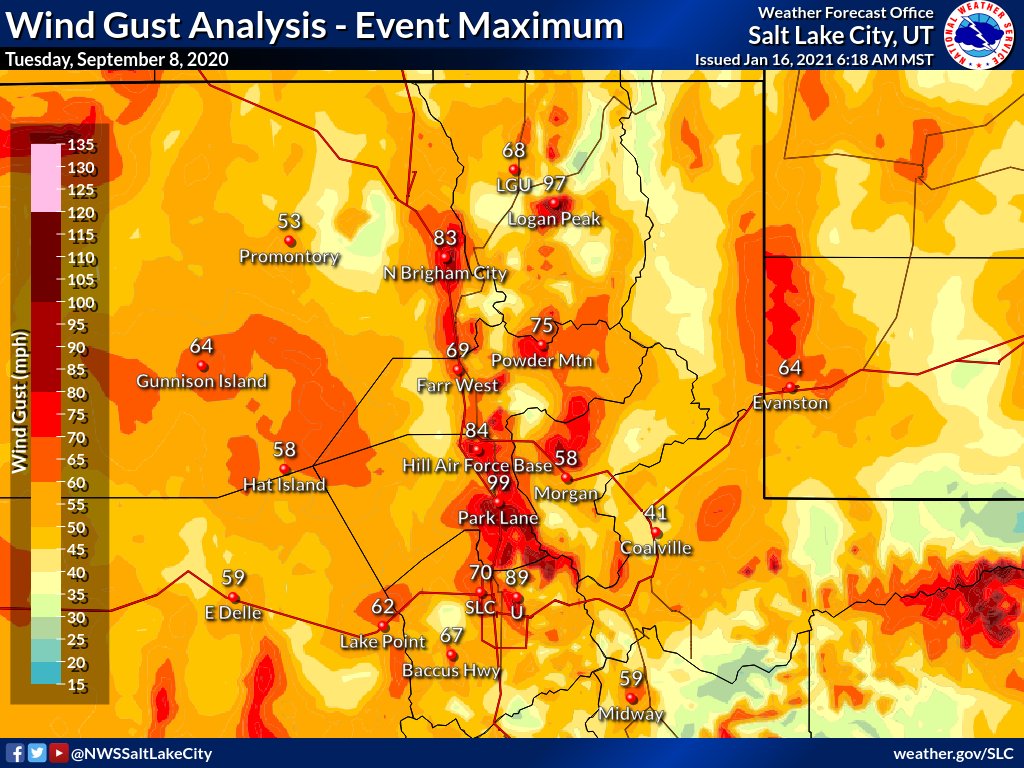
1/8 For those wondering why the mountains are no escape from the smoke these days... One key difference between our wintertime valley pollution and summertime smoke is the presence or lack of a stable layer in the form of a temperature inversion. #utwx 

2/8 This oversimplified graphic shows how the stable layer/temperature inversion creates a cap that traps a shallow layer of pollution near the surface in winter, while under warm and well mixed summer conditions, these pollutants (like smoke) are distributed throughout.
3/8 There are scenarios where the concentrations are high near the surface, and others where the surface remains relatively 'clean' while concentrations aloft are very high. But with enough smoke, over sufficient time and distance, distribution in the column becomes homogeneous.
4/8 Why didn't the rain clear out the smoke like a good storm does for wintertime pollution? Well, to start, the shallow layer below the inversion will 'mix out' into the clean air above, decreasing the near-surface concentration, rapidly improving visibility and air quality.
5/8 Since the near-surface layer was already well mixed with the free atmosphere above, there was no shallow pollution layer to 'mix out.' The smoke is pervasive throughout the entire column, so there is no clean air above to help reduce concentrations at the surface.
6/8 The rain may not have fully scoured the smoke for a number of reasons, the first being that the concentration of smoke behind yesterday's boundary was just that high, and the collection by raindrops was just not efficient enough to precipitate it all out.
7/8 Smaller particles may also survive collection by the mostly large rain droplets that were observed in this precipitation event. Lastly, smoke continued to be transported in from the W/NW throughout the event, creating a serious uphill battle for the rainfall to fight.
8/8 In all, there are a number of complex reasons why we are been experiencing this 'wet campfire' smell along with degraded air quality throughout this significant weather event, despite being the kind of storm that we're used to clearing out the air in the cool season. #utwx
• • •
Missing some Tweet in this thread? You can try to
force a refresh






